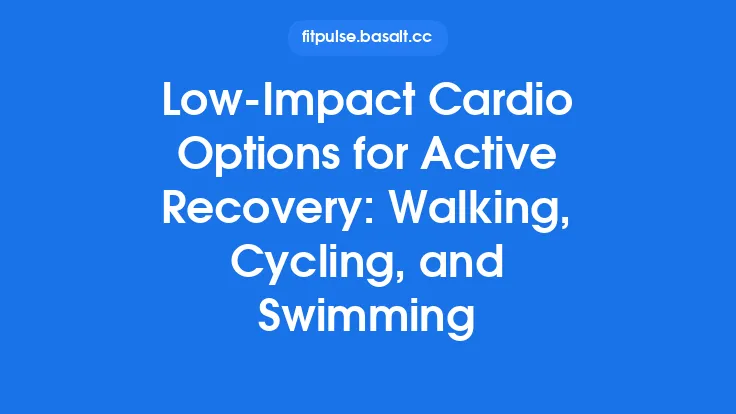Cycling is one of the most efficient ways to move your body, but the benefits you reap are directly tied to how well you translate power into forward motion. When the pedal stroke is smooth and the bike fits your anatomy, you’ll notice higher speeds, reduced fatigue, and a lower risk of overuse injuries. This article breaks down the two pillars of effective cycling performance—pedal stroke optimization and bike fit—into actionable concepts that you can apply whether you’re a commuter, a weekend enthusiast, or a competitive rider.
Understanding the Pedal Stroke: The Four Quadrants
A complete pedal revolution can be divided into four distinct phases, each with its own biomechanical goal:
| Quadrant | Primary Motion | Muscles Engaged | Key Cue |
|---|---|---|---|
| Power (0°‑90°) | Downstroke | Quadriceps, glutes, calves | “Push through the ball of your foot.” |
| Transition (90°‑135°) | Bottom dead center | Hamstrings (eccentric), hip flexors | “Maintain tension, avoid dead spots.” |
| Recovery (135°‑225°) | Upstroke | Hamstrings, hip flexors, tibialis anterior | “Pull the pedal up, not just lift.” |
| Finish (225°‑360°) | Top of the stroke | Hip flexors, core stabilizers | “Prepare for the next power phase.” |
By visualizing the stroke as a continuous loop rather than a simple down‑push, you can engage a broader range of muscle groups, distribute load more evenly across the joint, and improve overall efficiency.
Technique Drills to Refine Each Quadrant
1. Single‑Leg Pedal Drills
- Purpose: Isolate the upstroke and identify dead spots.
- Execution: Clip into a single pedal, keep the opposite leg at the bottom of the stroke, and maintain a steady cadence (80‑90 rpm). Focus on pulling the pedal upward with the heel while keeping the foot level.
2. High‑Cadence Spin‑Ups
- Purpose: Train neuromuscular coordination for a smoother transition.
- Execution: After a warm‑up, increase cadence to 100‑110 rpm for 30‑second intervals, keeping resistance low. Concentrate on a circular motion rather than a “mashing” action.
3. Torque‑Focused Intervals
- Purpose: Strengthen the power quadrant.
- Execution: Ride in a gear that produces a noticeable torque (e.g., 80‑100 W). Perform 2‑minute intervals at a cadence of 70‑80 rpm, emphasizing a strong push through the ball of the foot.
4. Heel‑Down Drill
- Purpose: Reinforce proper foot positioning.
- Execution: Clip in with the cleat positioned slightly rearward, then ride with the heel lightly touching the pedal at the bottom of the stroke. This encourages a forward foot roll and a more efficient pull on the upstroke.
The Role of Cleat Positioning
Cleat placement is a subtle but powerful lever for optimizing the pedal stroke. Two primary axes matter:
- Fore‑aft (X‑axis) Position:
- Forward (toe‑side): Promotes a stronger push but can increase knee strain if too far.
- Rearward (heel‑side): Enhances the pull on the upstroke but may reduce power output.
- Guideline: Align the cleat so that the ball of the foot sits directly over the pedal axle when the crank is horizontal. Fine‑tune by moving the cleat in 2‑mm increments until you feel a balanced push‑pull sensation.
- Rotational (Y‑axis) Angle:
- Set the cleat so the foot points straight ahead when the crank is at 12 o’clock. Small adjustments (±2°) can alleviate knee tracking issues and improve comfort.
Bike Fit Fundamentals: Aligning the Body with the Machine
A well‑fitted bike is the foundation for an efficient pedal stroke. The following measurements should be taken systematically, preferably with a professional bike fitter, but they can also be approximated at home.
1. Saddle Height
- Method: Sit on the bike with the crank at the bottom (6 o’clock). Place a heel on the pedal; your leg should be fully extended. When you move to the ball of the foot, a slight bend (≈25‑30°) in the knee should remain.
- Why It Matters: Too high a saddle forces the hips to rock, wasting energy; too low a saddle overloads the knees and reduces power.
2. Saddle Fore‑aft Position
- Method: With the cranks horizontal, draw a vertical line from the front of the knee cap. The tibial tuberosity (shin bone) should intersect this line. Adjust the saddle forward or backward until the line passes through the pedal axle.
- Why It Matters: Proper fore‑aft placement ensures the quadriceps and hamstrings work in their optimal length‑tension relationship, improving both power and comfort.
3. Handlebar Reach and Drop
- Reach: Measure the horizontal distance from the saddle center to the center of the handlebars. A comfortable reach typically allows a slight bend in the elbows (≈20‑30°) while maintaining a relaxed upper back.
- Drop: The vertical distance between the saddle and the handlebars. A moderate drop (≈70‑80 mm) encourages an aerodynamic position without compromising breathing.
4. Cleat Alignment (Revisited)
- After establishing saddle height and fore‑aft, revisit cleat positioning. Small changes in saddle height can affect the optimal cleat fore‑aft location.
5. Footwear Compatibility
- Ensure the shoe’s sole stiffness matches the intended riding style. Road cyclists benefit from very stiff soles (≈150 Nm/deg), while gravel or touring riders may prefer a slightly more flexible sole for comfort on varied terrain.
Biomechanical Considerations for Injury Prevention
Even though the focus of this article is technique, it is impossible to discuss pedal stroke optimization without acknowledging the musculoskeletal system’s limits. The following principles help you stay healthy while pursuing efficiency:
- Symmetry: Regularly check that both legs produce similar torque curves using a power meter. Significant asymmetry (>10 %) may indicate a fit issue or muscular imbalance.
- Core Stability: A strong core stabilizes the pelvis, allowing the legs to generate power without excessive lateral movement. Incorporate planks, side bridges, and rotational core work into your strength routine.
- Hip Mobility: Limited hip flexion/extension can force compensations in the knee and ankle. Perform dynamic stretches such as leg swings and hip circles before rides.
- Progressive Load: Increase training volume or intensity by no more than 10 % per week to give connective tissues time to adapt.
Monitoring and Quantifying Pedal Stroke Efficiency
Modern cycling computers and power meters provide data that can be translated into actionable feedback.
| Metric | What It Indicates | Target Range |
|---|---|---|
| Pedal Smoothness (or Torque Effectiveness) | Ratio of useful torque to total torque applied | > 95 % |
| Left‑Right Balance | Equality of power output between legs | 48‑52 % (left) |
| Average Cadence | Ability to maintain a consistent pedal speed | 80‑95 rpm for most road riders |
| Peak Power | Maximum force generated during the power quadrant | Varies by rider; use as a benchmark for sprint training |
When you notice a dip in smoothness, revisit the drills outlined earlier. A persistent left‑right imbalance often points to cleat misalignment or a subtle saddle fore‑aft issue.
Practical Steps to Implement the Optimized Technique
- Baseline Assessment
- Record a 20‑minute steady‑state ride with a power meter. Note torque effectiveness and cadence stability.
- Fit Check
- Verify saddle height, fore‑aft, and handlebar reach using the methods above. Adjust in small increments (2‑3 mm for height, 2 mm for fore‑aft).
- Cleat Fine‑Tuning
- Start with a neutral cleat position, then shift forward or backward in 2‑mm steps while monitoring torque effectiveness.
- Drill Integration
- Add one of the pedal stroke drills to each training session for the first two weeks. Rotate drills to cover all quadrants.
- Re‑evaluate
- After two weeks, repeat the baseline ride. Aim for a 2‑5 % improvement in torque effectiveness and a more balanced left‑right power split.
- Maintenance
- Re‑assess fit and cleat position every 4‑6 weeks, especially after significant changes in flexibility, weight, or training volume.
Frequently Overlooked Details
- Saddle Tilt: A level saddle prevents excessive pressure on the perineum and ensures a neutral foot angle. Small adjustments (±1°) can make a noticeable difference.
- Pedal Float: If you use clipless pedals, a modest float (±6°) allows natural knee tracking while still providing a secure connection.
- Chainline Alignment: A straight chainline reduces drivetrain losses, indirectly supporting a smoother pedal stroke.
- Bike Frame Stiffness: While not a “gear guide,” choosing a frame that matches your power output (e.g., carbon for high‑output riders) can affect how efficiently power translates to the road.
Closing Thoughts
Optimizing the pedal stroke and achieving a precise bike fit are interdependent processes that together unlock the full potential of your cycling practice. By dissecting the stroke into its four quadrants, employing targeted drills, and meticulously aligning your body with the bike, you create a harmonious system where power flows effortlessly and fatigue is minimized. Remember that the journey to efficiency is iterative—small adjustments, consistent monitoring, and a willingness to experiment will keep you moving forward, mile after mile, with confidence and comfort.





